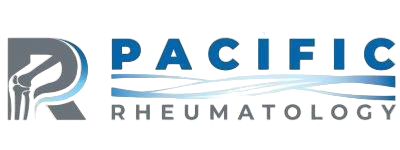Stem cells and platelets work together in your body, complementing one another as they heal injuries and diseases. At Pacific Rheumatology Medical Center, under the direction of Dr. Behnam Khaleghi, we have the option of treating you with just one or both types of regenerative medicine therapies, depending on the nature of your injury and the severity of your pain.
Here’s a rundown of the differences between stem cells and platelets, which we inject in the form of platelet-rich plasma (PRP).
Different sources
PRP and stem cells come from different sources. PRP is made from platelets extracted from your blood. Stem cells can come from several possible sources, including different locations in your body and amniotic/umbilical sources.
Your blood consists of plasma (the liquid part), red blood cells, white blood cells, and platelets. We only need to take a sample of your blood and process it in a centrifuge to separate the platelets from the other components. Then we immediately use a concentrated dose of platelets in your PRP injection.
Adult stem cells are found in many locations throughout your body. When needed for stem cell therapy, however, these cells are typically harvested from body fat and bone marrow.
A simple liposuction procedure can remove a sample of body fat, while a specialized hollow needle is used to withdraw bone marrow from the hip bone. Then the tissue sample can be processed to separate the stem cells, which are a type of adult stem cells called mesenchymal stem cells (MSCs).
After giving birth to a healthy baby, women can choose to donate amniotic and umbilical cord blood. These tissues are normally discarded, yet they contain several types of stem cells that can be harvested and purified, making them safe to use for a stem cell injection.
Different mechanisms of action
The most important difference between PRP and stem cells is the way they work and the benefits you receive.
PRP
Platelets activate and accelerate healing. When you’re injured, they travel through your bloodstream to the damaged tissues and release proteins called growth factors.
They release many different growth factors and each one triggers cellular activities that are essential for healing.
For example, growth factors from platelets can:
- Trigger new blood vessel growth
- Activate healing activities in the nearby cells
- Recruit stem cells to the injury
- Regulate inflammation
- Protect healthy tissues
- Form the matrix that supports new tissue growth
We can achieve the same results by injecting PRP directly at the site of injured tissues.
Stem cells
Stem cells are responsible for regenerating all the different types of tissues needed to keep your body healthy. These cells have the unique ability to self-replicate as many times as needed to create new cells. Then the new cells develop into any number of different tissues.
Adult stem cells thrive throughout your body, waiting until they’re needed to replace old tissues or repair damaged tissues. Though each type of stem cell regenerates several different types of tissues, most target specific functions.
For example, hematopoietic stem cells regenerate the different blood cells, while MSCs rebuild tissues such as muscles, ligaments, tendons, cartilage, tendons, skin, and fat.
Exosomes
Stem cells also help you heal by releasing substances called exosomes. Exosomes contain biochemicals that stimulate a wide range of healing activities.
They may stimulate tissue regeneration, boost your immune cells, transport DNA or RNA, or activate the release of growth factors, to name just a few of their possible roles. Exosomes can also be extracted and injected alone or together with stem cells and/or PRP.
Choosing PRP vs stem cells
PRP and stem cells effectively relieve pain by healing your injury and regulating inflammation. And they’re both good choices for a range of musculoskeletal and rheumatological conditions, including arthritis, ligament injuries, tendonitis, scleroderma, and lupus.
We may use both at the same time or choose one treatment based on your health care needs. For example, PRP is especially beneficial for slow-healing wounds and damaged tissues with a poor blood supply, while stem cells are needed when you have severe tissue damage.
If you have ongoing pain or a persistent injury, call Rheumatology Medical Center or schedule an appointment online to learn more about your regenerative treatment options. We have offices in Orange and Laguna Hills, California.
